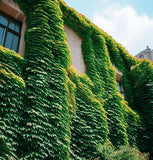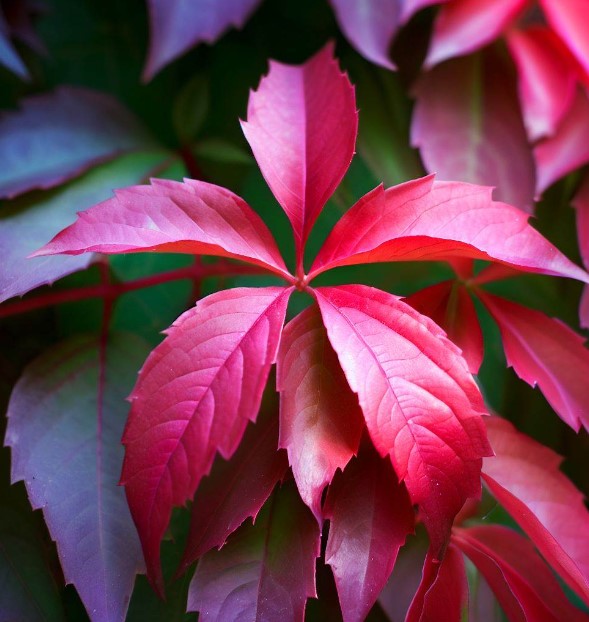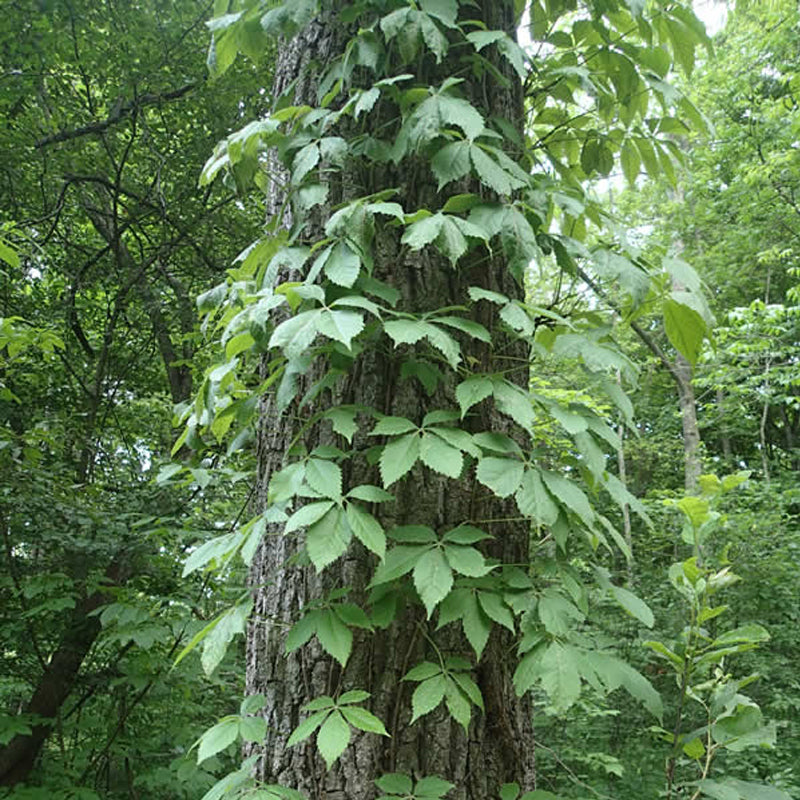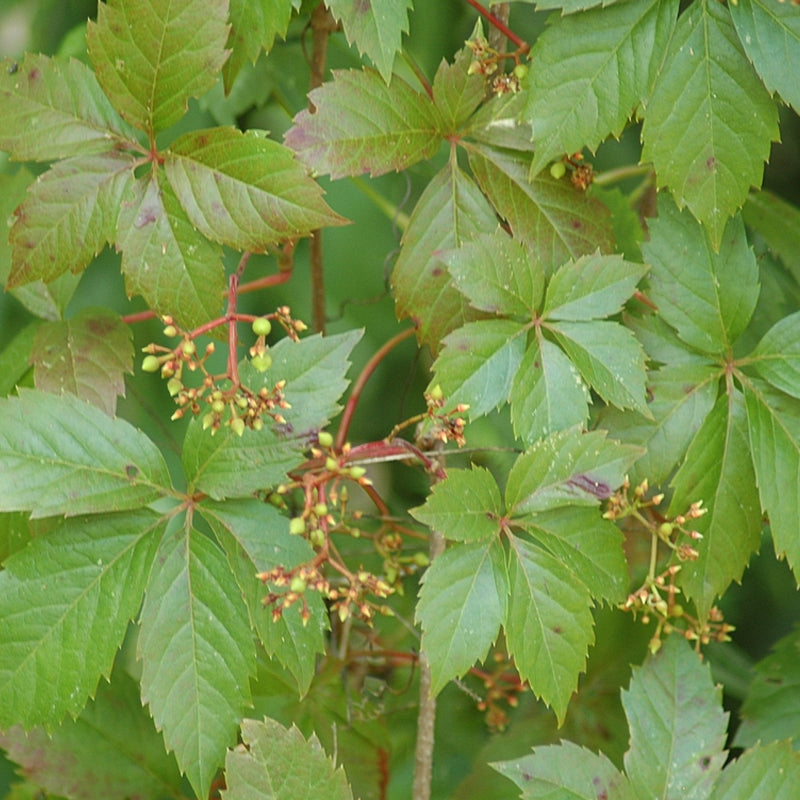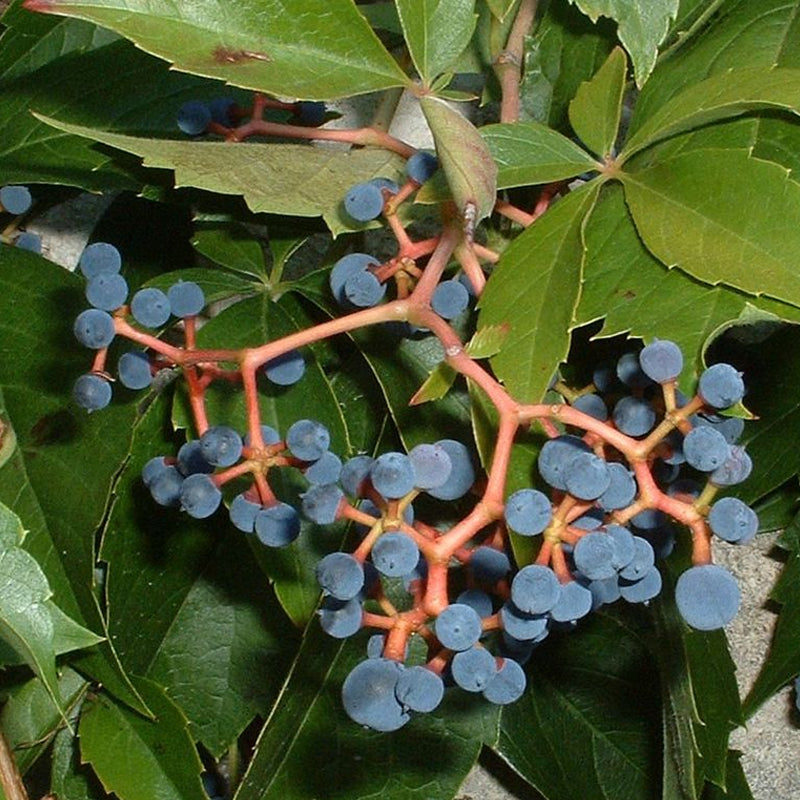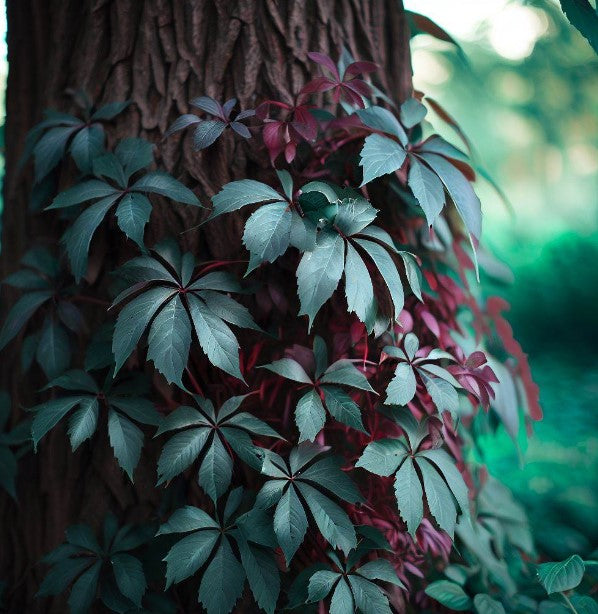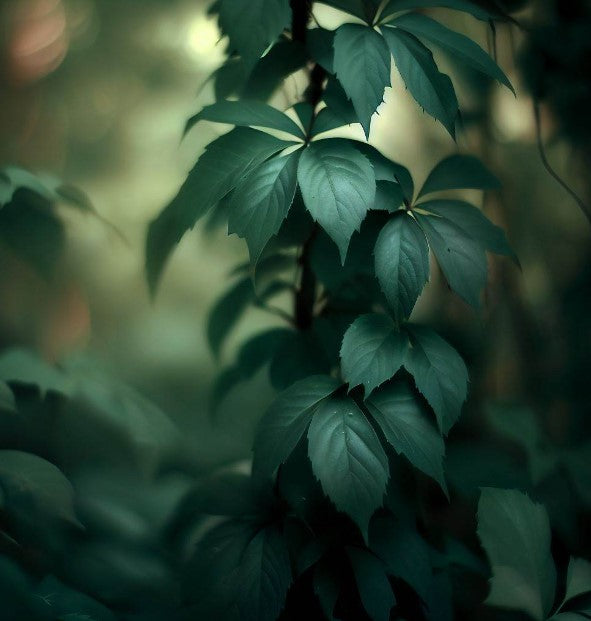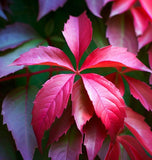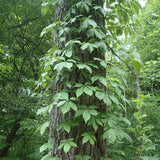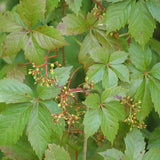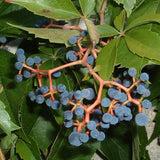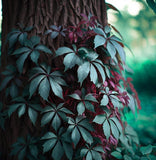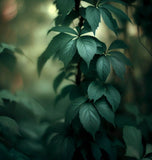Parthenocissus quinquefolia (Virginia Creeper, Engelmann's Ivy)
Parthenocissus quinquefolia (Virginia Creeper, Engelmann's Ivy) is a deciduous climbing vine native to eastern and central North America. It is a member of the Vitaceae family, which also includes grapevines. Virginia Creeper is valued for its ornamental foliage and its ability to cover walls, fences, and arbors.
Growth habit: Virginia Creeper is a vigorous, fast-growing vine that can reach heights of 30 to 50 feet (9 to 15 meters) or more if left unpruned. It climbs by means of adhesive tendrils that use small adhesive pads to cling to surfaces such as walls, fences, and trees.
Leaves: The leaves of Virginia Creeper are compound and composed of five leaflets (hence the species name "quinquefolia," meaning "five-leaved"). Each leaflet is ovate or lanceolate in shape with serrated edges. The leaves turn a vibrant red or burgundy color in the fall, creating a spectacular display.
Flowers: Virginia Creeper produces small greenish-white flowers in late spring to early summer. These flowers are typically inconspicuous and give way to small blue-black berries that attract birds.
Adaptability: Parthenocissus quinquefolia is adaptable to various soil types, including sandy, loamy, or clay soils. It can tolerate a wide range of growing conditions and is relatively low-maintenance once established. It thrives in full sun to partial shade, though it can handle some shade as well.
Climbing ability: Virginia Creeper climbs by attaching itself to surfaces with adhesive tendrils. The tendrils can damage delicate surfaces such as wood or paint, so it is important to consider the substrate when choosing a support structure.
Wildlife value: The berries produced by Virginia Creeper are a food source for birds, which helps to spread the seeds and contributes to its natural propagation. The vine also provides cover and nesting opportunities for birds.
It's worth noting that while Virginia Creeper and Poison Ivy (Toxicodendron radicans) can look similar, they are different species. Virginia Creeper has five leaflets and produces berries, while Poison Ivy has three leaflets and produces white, waxy berries. Additionally, Virginia Creeper is not toxic like Poison Ivy, and many people appreciate it for its fall color and ornamental value.
Botanical Name : Parthenocissus quinquefolia
Common Name : Virginia Creeper
Height : 30-50 ft
Spread : 20- 30 ft
Germination Info : Seed requires 60 days cold moist stratification
Hardiness zone : 4+
Average seed per ounce : Approx. 813

